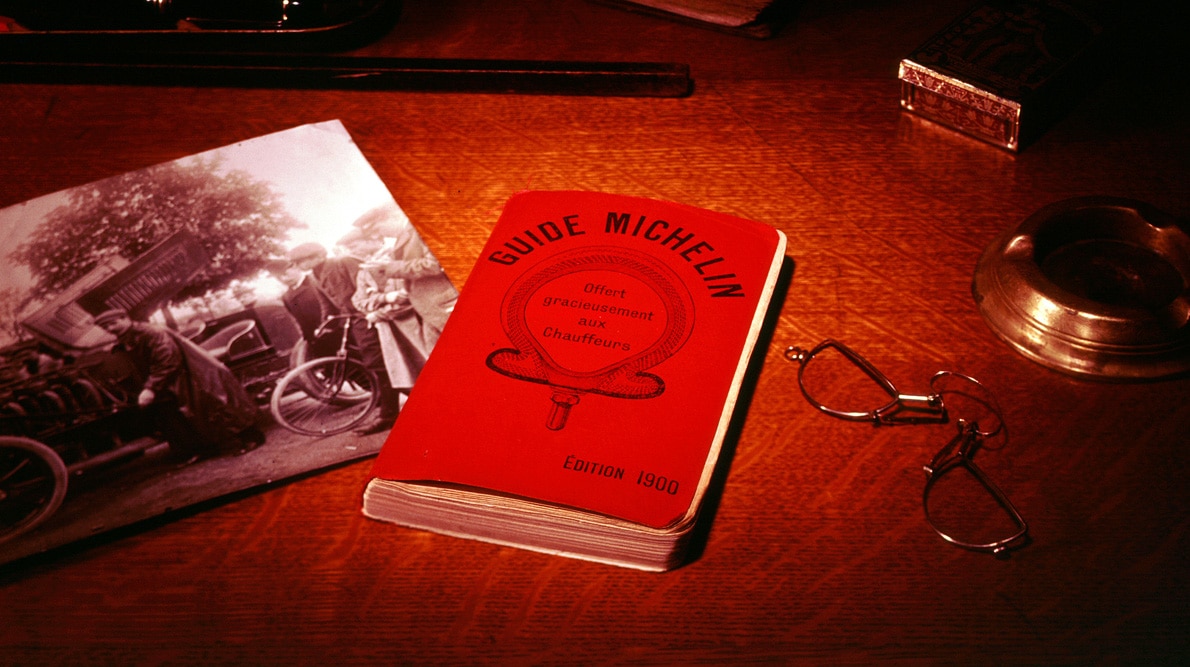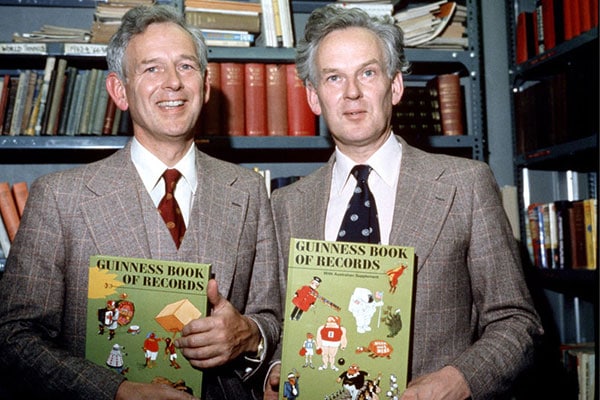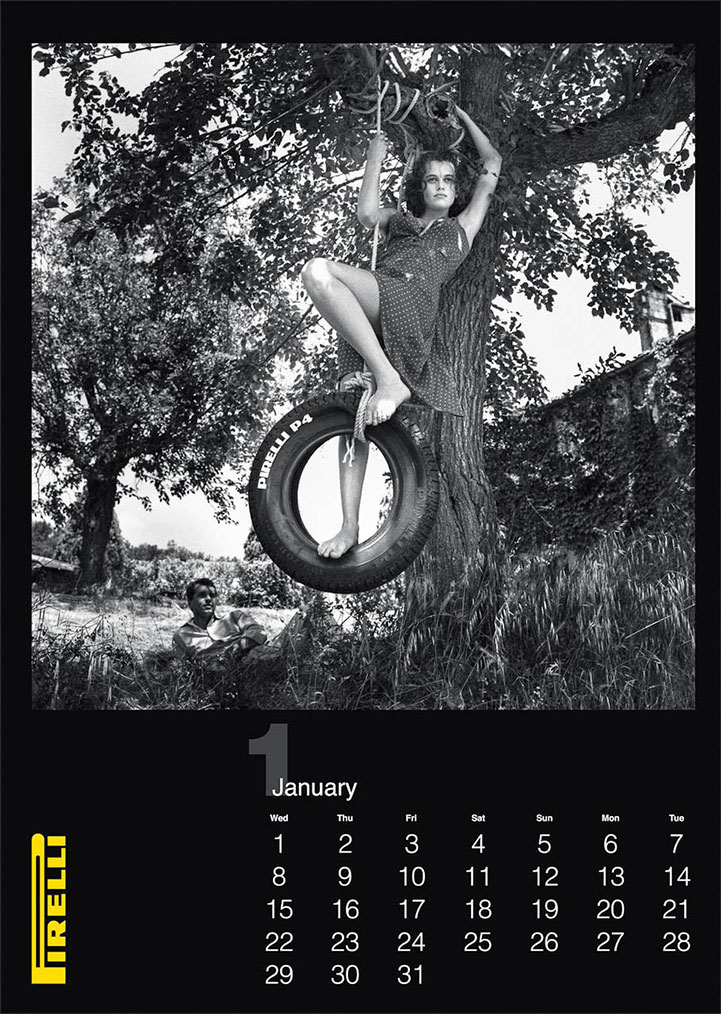It’s been 120 years, and the company is recognized around the world. In 2018 alone it posted 2.775 billion euros in profit, and that continues to grow year after year.[2]
The Michelin brothers used content marketing at a time when no one had heard of content marketing.
How Michelin implemented content marketing in the early 20th century
In 1900, Michelin published a book called “The Michelin Guide”.
The idea was simple.
The more people who bought cars, the more tires the company would sell. So they needed to show the French that buying cars made sense and that using the new invention would be easy and pleasant.
That is why the “Guide” included information for drivers on the location of garages, hotels, hospitals and other places that could be useful to travelers on the road.
Michelin printed 35,000 copies of the first edition. The “Guide” was 400 pages and was given away for free.[1]
In those days there was no Internet or Google maps, so such a handy guide was useful for motorists.
One day, the brothers found that in some workshops the workers stacked the guidebooks on top of each other and used them as tables.
The Michelin brothers then realized that they wanted their “Guide” to not only be useful, but to become an object of desire and value.

The first edition of Michelin brand “Guide” published in 1900 in the number of 35 thousand copies. Source: LINK
How the development of most popular content and the introduction of fees helped Michelin grow
In 1920, Michelin made changes to the guide that would make it a global powerhouse in later years.
The brothers realized that people don’t value what they get for free.
They stopped all advertising and the company began to charge for the guide.
The Michelin brothers decided to focus on quality content so that people would want to have the guide.
It turned out that travelers valued the section with recommendations of restaurants the most.
This segment of the guidebook was expanded, and Michelin quickly gained a reputation as the most reliable source of information on where to eat.
In 1926, the company hired anonymous restaurant inspectors who rated the level of food and service of different dining establishments. At first, they were awarded only one star. The popularity of the guide grew.
In 1931 a three-star rating system was introduced, with three stars given to restaurants of the highest world standard. Receiving a Michelin star was valued by the restaurant industry and people who dined out.
People were lining up to get their guidebooks and wanted to travel to distant places to eat at the restaurants recommended in the guide, and for this they needed cars.
The company not only increased tire sales, but also promoted a new independent product that has become a brand in its own right. From the day of its launch to today, 30 million copies of the “Michelin Guide” have been sold. And almost 100 years after the star system was created, it is the most prestigious award a restaurant can receive.[1]

Michelin was founded by brothers André (right) and Édouard (left) Michelin. From the beginning, they focused on combining their brand with recommendations of restaurants or places to stay, which helped them stand out from the competition. Source: LINK
How to get customers by bringing content marketing to bars?
Another example of brilliant content marketing from the past is the Irish company Guinness.
In 1951, Hugh Beaver, the managing director of Guinness Breweries, got into an argument with a friend about which bird was faster – the golden plover or the scotch grouse.[3]
He realized that there was no easy answer to this anywhere and neither would win in this discussion. The question then arose in his mind – how many such disputes remain unresolved in bars across Ireland and the world?
He commissioned two scholars from London to collect and collate the curiosities and world records in one place. This is how the nucleus of the Guinness Book of World Records was created.
A year later the book was published by one of the largest publishers in the UK. It quickly became a bestseller and by the end of 1955 had sold out.
Since then it has grown into a worldwide phenomenon. Interestingly, it has broken one record itself – it is the best-selling copyrighted book in the world.[4] The famous brewery is no longer as strongly associated with it today as it once was, but through its publication it has managed to promote the brand and become a global powerhouse.
Guinness’ strength was understanding what their customer needed – the ability to talk about interesting issues at the bar.

Ross and Norris McWhirter, the academics who were commissioned by Hugh Beaver, founder of Guinness Breweries, to collect and collate interesting facts and world records in one place in the form of a book. Source: LINK
Content marketing with class by Pirelli
How to stand out as a company can be learned from Pirelli, another brand on our list that has masterfully used content marketing.
In 1963, Pirelli published a calendar with naked women – “The Cal”. There were many such calendars back then, as almost all construction and car companies were publishing calendars. It was hard to get space on the wall of a car repair shop but Pirelli had a vision.
The photo shoots were organized with splendor, not in dingy garages, but in the most exotic corners of the world. Pirelli employed the best art directors and the most famous models in the world. In addition, the company relied on top photographers and was willing to make bold decisions.
For example, in 1972 they hired photographer Sarah Moon . Today we don’t see anything shocking with hiring a woman photographer, but in 1972 this was not the norm. A woman could stand in front of, but not behind the camera.[5]
Years passed, and people began to appreciate the artistic photos on the pages of the Pirelli calendar. Pirelli, like Michelin, knew that people did not appreciate what was too readily available and that’s why the calendar was impossible to buy, except second-hand.
Only 20,000 lucky people around the world received the calendar, including Queen Elizabeth II.[6]
As a result, even before the calendar is released, it is talked about all over the world. Photographers and models vie for the opportunity to take part in its next edition, and the company that sells tires receives continuous publicity.

Pirelli stood out from the competition by organizing the photo shoots with glamour – not in dingy auto repair shops, but in an artistic, original way, involving the world’s best photographers. Photo: card from “The Cal” 50th anniversary calendar, © Pirelli Calendar 2014, Helmut Newton
It’s hard to do good content marketing without understanding your customer’s needs
All three of these content projects couldn’t be successful without a deep understanding of the customers’ needs. Sometimes, even when we know those needs, it’s not easy to hit the exact format that customers want.
Sometimes you have to stray a bit, like the Michelin Guide, which only with a refreshed, paid, restaurant-focused edition became a huge success.
It’s a path worth pursuing.
As Édouard Michelin summed it up:
“If you advertise to lie to people, you will bring your company to ruin. But if you advertise to give people the truth and specific information, it will bring you success.
I discovered many years ago that explaining to a person how best to use a tire and making him want to use it is much better than trying to convince him that your tire is the best in the world. If you believe your tire is the best, let the customer find out for himself.”[7]
Text: Martyna Kozłowska, Maciej Budkowski
Bibliography
[1] “The Michelin Guide”‘s history: https://guide.michelin.com/pl/en/about-us
[2] Michelin’s finances: https://www.swiatopon.info/artykuly/michelin-publikuje-wyniki-finansowe-za-rok-2018,68488
[3] Hugh Beaver: https://en.wikipedia.org/wiki/Hugh_Beaver
[4] “The Guinness Book of World Records”‘ history: https://www.guinnessworldrecords.com/about-us/our-history/
[5] History of „The Cal””: https://pirellicalendar.pirelli.com/en/the-three-eras-of-the-cal
[6] “The Cal” not for everyone: https://viva.pl/moda/viva-moda/historia-kalendarza-pirelli-jak-kalendarz-z-polnagimi-modelkami-stal-sie-instytucja-swiata-fotografii-i-mody-31867-r3/
[7] „The Magazine of Business”, April 1922, n. 41, 446
